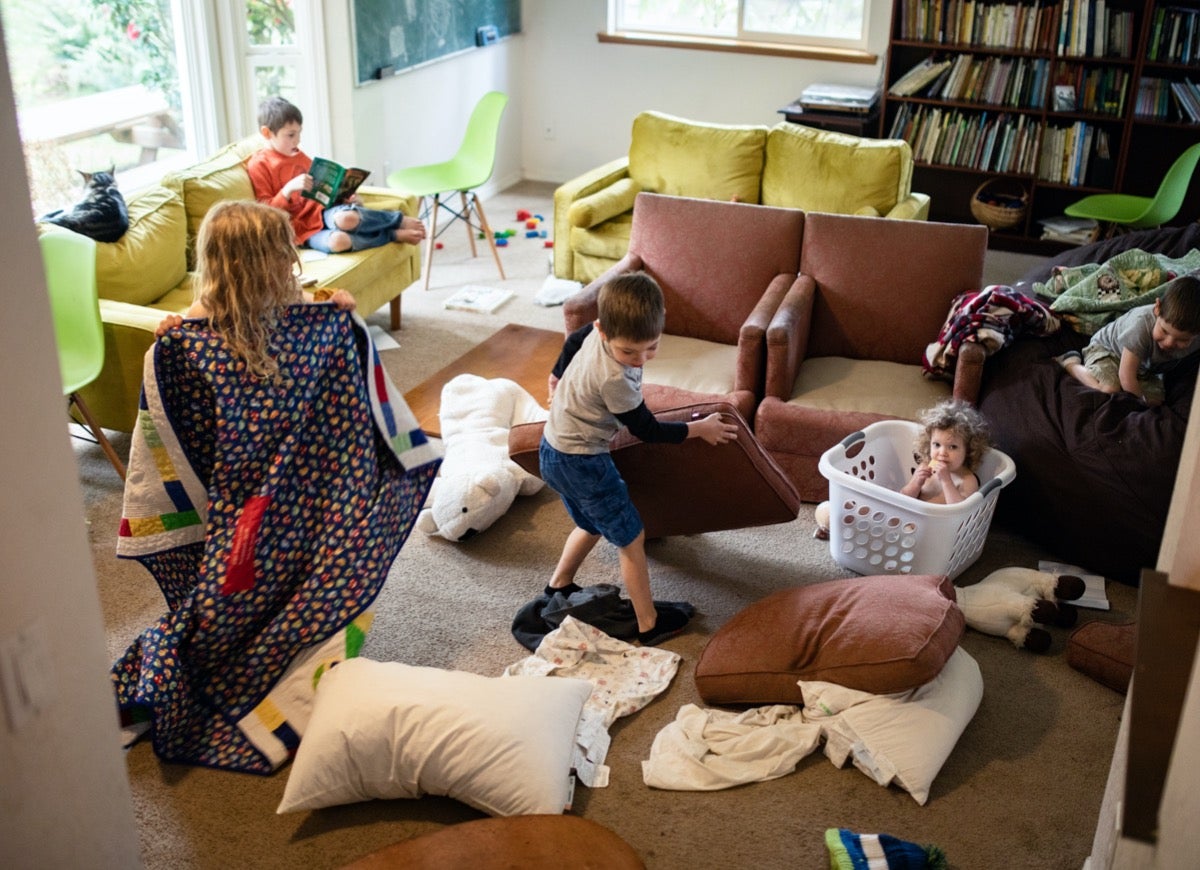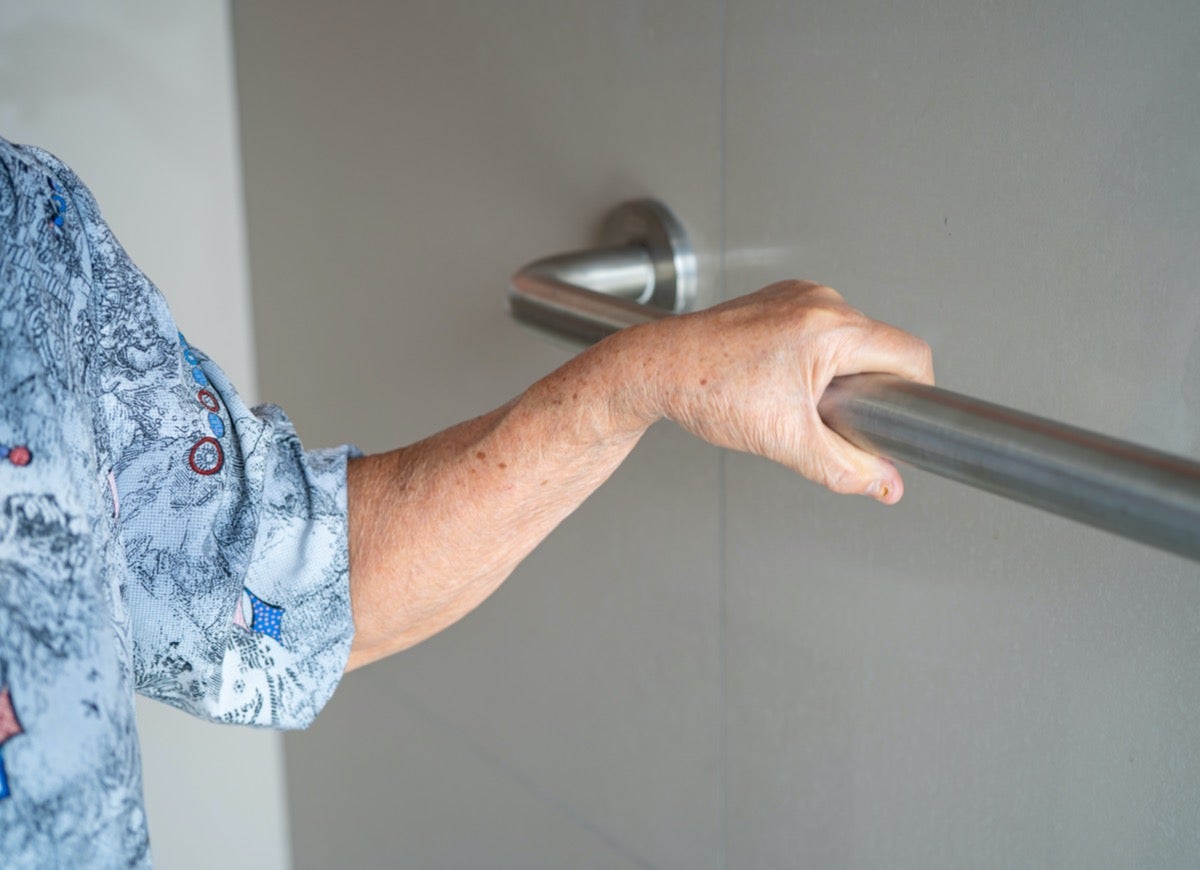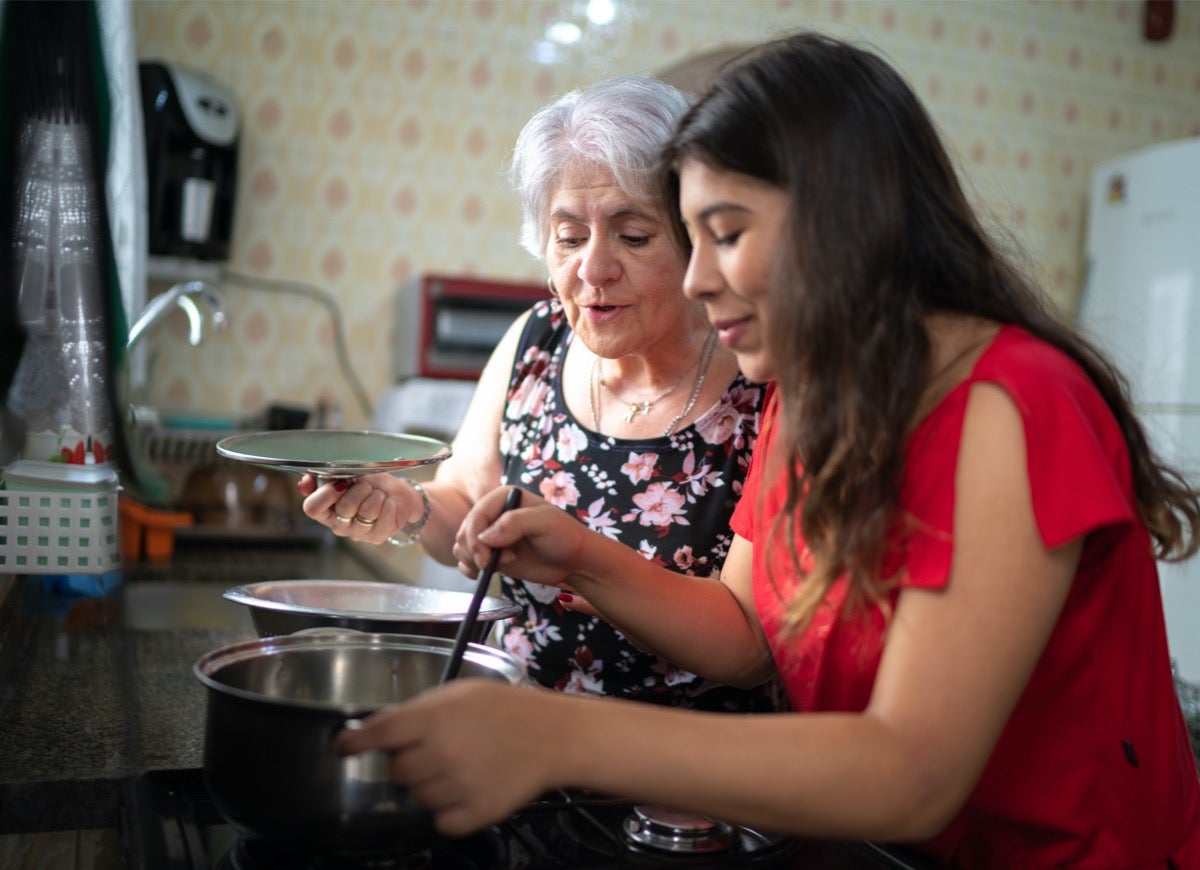We may earn revenue from the products available on this page and participate in affiliate programs. Learn More ›
Multigenerational Households Are Increasingly Common

If you’re considering moving in with extended family, you’re not alone. The number of families residing in a multigenerational household in America has nearly quadrupled over the past decade, according to a recent study from Generations United. They estimate that 66.7 million adults ages 18 and older live with three or more generations of relatives. In recent years, prolonged unemployment, young adults home from shuttered colleges, and other pandemic-related life changes have resulted in even more multigenerational households.
The fact that this type of living arrangement is on the rise is not surprising when you consider the benefits, such as shared expenses, reduced loneliness, and help with childcare and eldercare. While living with extended family can offer both emotional and financial benefits, it can also come with some challenges—many of which might surprise you.
Family Bonding

Rosemary Ruela has firsthand experience living in a multigenerational household. After arriving in the U.S., Ruela’s paternal grandparents bought a house for their extended family until her parents could buy one of their own. Later, when her maternal grandfather died, the family opened their doors to her grandmother, who resided with them until her passing. Ruela says she feels fortunate they had that time with her grandmother. “She cooked for us, told us stories, sang us songs, and took care of my brother and me,” remembers Ruela.
Too Much Togetherness

While sharing a home can facilitate bonding, it can also be a bit “smothering,” says Ruela. Families that reside together will want to figure out how to enable privacy for all. Ideally, each generation could have their own zone, with a minimum of a personal bathroom and bedroom, or perhaps a private in-law suite. For instance, growing up, Ruela’s family each had their own floor of the home. When that’s not possible, consider adding pocket doors, or sliding barn doors (available on Amazon) or curtains for separation.
Plentiful Unsolicited Advice

Grandma thinks the little ones have too much screen time, and everyone thinks she needs to get out of the house more. Opinions are plentiful among different generations, but there’s no one right way to run a household or raise children. Setting emotional boundaries is just as crucial as creating physical ones.
Family members must come together to decide who’s responsible for what decisions and to communicate their needs and expectations. Agree to share opinions only when asked, especially when it comes to personal choices. Speak up early and clearly to avoid tension and hurt feelings later.
Help With Children and Elders

Once Ruela had a daughter of her own, her grandmother and mother helped to look after her when she went to work. Now she’s paying it forward with her aging parents. She and her husband are planning a home renovation that includes making room for her mother and father. They are considering additional an in-law space with an extra living/home office space and bedroom. “We want to make it so that they feel this is their home and they are not just guests here,” she says.
Things Can Get Messy

A lot of family members under one roof can equal a lot of stuff. Professional organizer Courtney Mayo of Call the Neat Geek in Cranford, N.J., says that the first step to readying your home for extended family is to purge as much as possible. “If you don’t use an item on a regular basis, it’s got to go,” she says. “Consider how best to use your space, implementing systems that support your family’s daily life.”
Mayo recommends creating zones within a room to make it multipurpose. For example, she says you can have “a kids’ play zone in one corner and a workout zone in the other.”
Clashing Design Ideas

Grandpa loves his recliner, and you wish it would burst into flames. Family members will inevitably have differing design preferences, but it’s essential to find a way to negotiate so everyone feels comfortable in the home. One idea is to have each family member list a few items they feel strongly about including and try to negotiate. Alternatively, some families find it helpful to divvy up rooms to design and furnish.
Still can’t agree? Consider enlisting the help of an interior designer who can combine kids’ plastic toys, grandma’s chintz, and your midcentury modern furniture for a result that will leave everyone—mostly—satisfied.
A High-Tech House Isn’t for Everyone

Generational differences are not only inconvenient, but they can also cause stress to older family members. Though high-tech, automated home might sound appealing, it’s essential to ensure that everyone is comfortable using the latest technologies. Some smart gear, such as a Ring doorbell (available on Amazon), can make the home safer. But with each new addition to the home, make sure to spend ample time getting everyone in the house acquainted with how it works.
Too Much Noise

A noisy house can be fun and engaging, but it can also be, at times, overwhelming and frustrating. If Johnny’s video game sounds are clashing with grandpa’s Frank Sinatra albums, it might be time to consider some noise-reducing solutions. Some family members might want to opt for a pair of noise-canceling headphones (available at Amazon). Or, if there’s space, it’s helpful to designate both play zones and quiet areas in the home. A finished basement can be the perfect video game or dance party spot.
All the Smells

Between Grandma’s air fresheners, Grandpa’s herring, and Junior’s sports gear, the odors in the house could reach epic levels. It’s essential to negotiate here too. Perhaps Grandma can keep her plug-ins in her room while food is relegated to the kitchen, and stinky shoes and gear get tucked away when not in use. To neutralize scents, add an air purifier (available on Amazon) in the home or try scattering bowls of baking soda throughout the house to absorb odors.
One Person is Left Cleaning Up Messes

Without a plan for delegating chores and responsibilities, one person is often left picking up after everyone else. To avoid this unfair setup, consider asking the family for input on who is comfortable doing what and assigning specific jobs to individuals, including chores for the kids. Create a chart or hang a store-bought one (available on Amazon) that includes each day of the week and the tasks that need to get done, along with the person’s name who will be taking care of the chore.
Grandparents Often Become Built-In Babysitters

Though a setup where grandma or grandpa watches the children can benefit everyone involved, as in Ruela’s case, it can also pose challenges for some. When expectations aren’t clearly communicated, older family members may feel burdened by the significant responsibility and limited in their own free time. On the other hand, parents might worry about exhausting the caretakers or feel like they have to work around their schedules.
Caretaker burnout also shows up at the other end when looking after elders. Making sure all family members get ample time for their own social needs and self-care should be a top priority.
Accessibility for All Family Members Can be Challenging

Making sure a home is both childproof and accessible for older adults will take a bit of ingenuity. Ideally, more senior family members can reside on the first floor with a bathroom that offers an entry-level shower, grab bars, and nonslip flooring. It’s also important to ensure that the home has ample lighting and is free of slipping and tripping hazards. Toys left scattered about can pose a threat, which is another reason why staying organized and designating a spot for playtime is essential. Locking away cleaners and medications from children is also a necessary precaution.
If it’s in the budget, hire a professional to come in to evaluate the home. There are both aging-in-place specialists and childproofing experts who can offer this service.
Related: 9 Things No One Tells You About Selling the Family Home
Too Many (Or Not Enough) Cooks in the Kitchen

Family meals in a multigenerational household can be extremely rewarding, offering a time for everyone to come together to share about their lives. However, meal planning, negotiating food preferences, and cooking are another story. A weekly family meeting is a great time to talk about meals for the week, among other things. Divide up responsibilities, including shopping, prep, and cooking. If family members have different food needs, make sure to have a plan so that there is something on the table for everyone.









